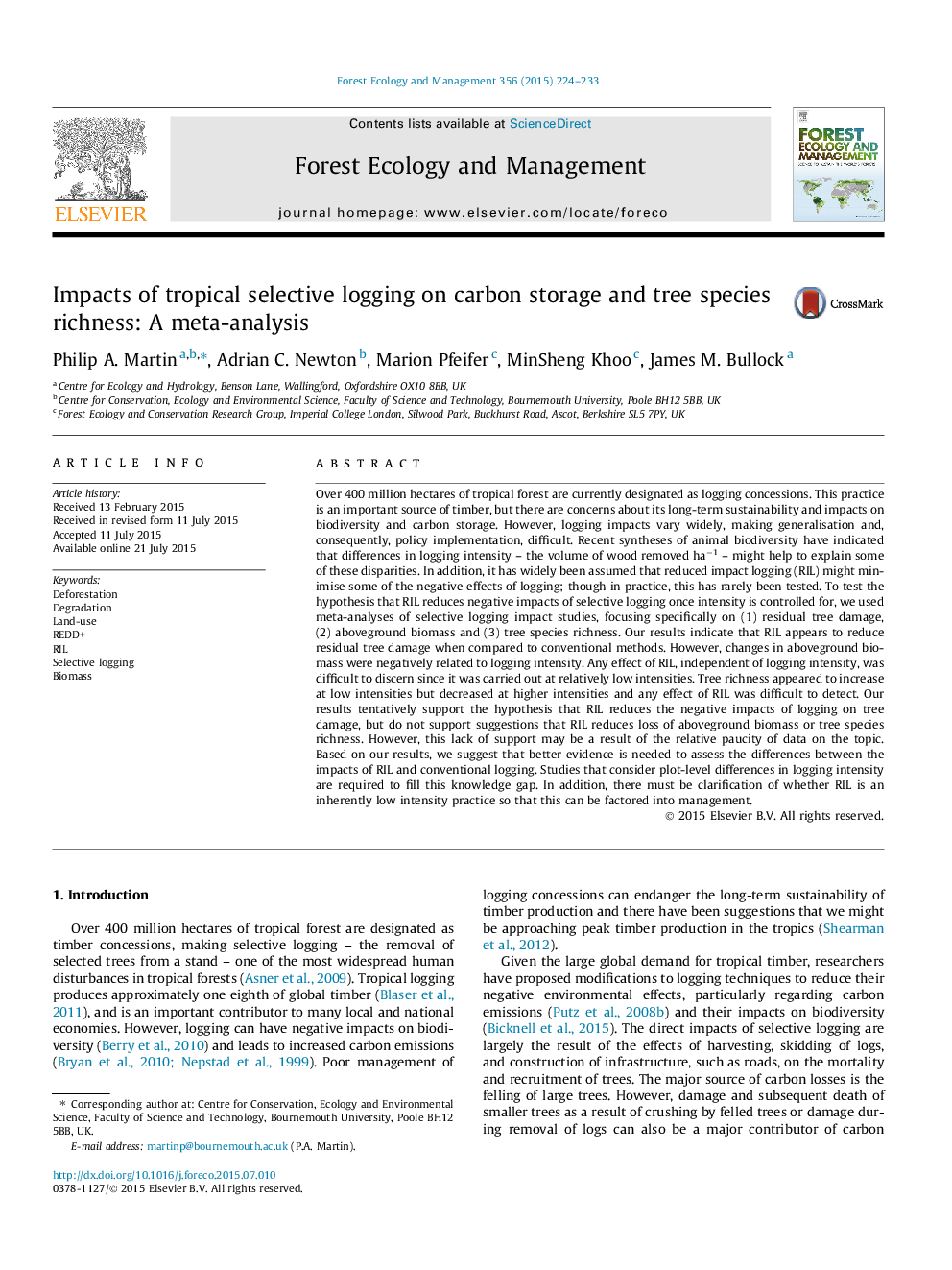| کد مقاله | کد نشریه | سال انتشار | مقاله انگلیسی | نسخه تمام متن |
|---|---|---|---|---|
| 86203 | 159171 | 2015 | 10 صفحه PDF | دانلود رایگان |
• We undertook a meta-analysis to assess impacts of tropical selective logging.
• This focused on stand damage, aboveground biomass and tree species richness.
• Higher logging intensity increased damage, and reduced biomass and species richness.
• Reduced impact logging reduces damage, this was not true for biomass or richness.
• More research is needed to determine impact of reduced impact logging on carbon.
Over 400 million hectares of tropical forest are currently designated as logging concessions. This practice is an important source of timber, but there are concerns about its long-term sustainability and impacts on biodiversity and carbon storage. However, logging impacts vary widely, making generalisation and, consequently, policy implementation, difficult. Recent syntheses of animal biodiversity have indicated that differences in logging intensity – the volume of wood removed ha−1 – might help to explain some of these disparities. In addition, it has widely been assumed that reduced impact logging (RIL) might minimise some of the negative effects of logging; though in practice, this has rarely been tested. To test the hypothesis that RIL reduces negative impacts of selective logging once intensity is controlled for, we used meta-analyses of selective logging impact studies, focusing specifically on (1) residual tree damage, (2) aboveground biomass and (3) tree species richness. Our results indicate that RIL appears to reduce residual tree damage when compared to conventional methods. However, changes in aboveground biomass were negatively related to logging intensity. Any effect of RIL, independent of logging intensity, was difficult to discern since it was carried out at relatively low intensities. Tree richness appeared to increase at low intensities but decreased at higher intensities and any effect of RIL was difficult to detect. Our results tentatively support the hypothesis that RIL reduces the negative impacts of logging on tree damage, but do not support suggestions that RIL reduces loss of aboveground biomass or tree species richness. However, this lack of support may be a result of the relative paucity of data on the topic. Based on our results, we suggest that better evidence is needed to assess the differences between the impacts of RIL and conventional logging. Studies that consider plot-level differences in logging intensity are required to fill this knowledge gap. In addition, there must be clarification of whether RIL is an inherently low intensity practice so that this can be factored into management.
Journal: Forest Ecology and Management - Volume 356, 15 November 2015, Pages 224–233
